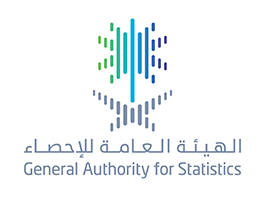Last update 30 / 07 / 2018
GASTAT Releases the Results of the Household Health Survey 2017

Containing more than 85 Indicators of Household Health in the Kingdom
GASTAT Releases the Results of the Household Health Survey 2017
On Thursday, Dhu al-Qidah 13th, 1439H. (Corresponding to July 26th, 2018) the General Authority for Statistics (GASTAT) released the results of the Household Survey (2017) on its official website (www.stats.gov.sa) as part of the results of the new surveys issued by GASTAT. This survey is the first survey in the field of household health, which was carried out during the period from (21/2/1439H. to 15/3/1439H.) corresponding to (10/11/2017 to 3/12/2017). It is one of the most important sources of data needed for development planning in the health and social fields at the national level. The bulletin includes more than 85 indicators on health and social phenomena and on family health in the Kingdom.
The results showed that 94.2% of the population at the age group (15 years and above) have good or very good health according to their personal assessment of their health. Regarding Saudi population, the percentage of Saudi males who have good or very good health reached 93.5%, whereas the Saudi females reached 91.7%. The results also showed that 25.4% of the population at the age group (15 years and above) undergo a periodic medical check-up to check their health at least once a year. While the percentage of population who are covered by a health insurance reached 37.1% of total population, 13.9% of them are Saudis and 75.4% are non-Saudis.
The results also showed that the percentage of population who suffer from chronic diseases diagnosed by a doctor at the age group (65 years and above) is the highest for both males and females. The percentage in this group is 73.8% for females compared to 67.8% for males. The percentage of population who have been diagnosed with diabetes by a doctor reached 8.5% of the Kingdom population, the males diagnosed with diabetes reached 8.7% and 8.3% for females. The percentage of Saudi population who have been diagnosed with diabetes reached 10.1%, 10.4% for Saudi males and 9.8% for Saudi females.
The percentage of population (15 years and above) who have been diagnosed with cancer disease reached 0.17%, whereas the percentage of population (15 years and above) who have been diagnosed with cardiovascular diseases reached 1.14%. The results of the survey also showed that the total fertility of Saudi females reached 2.35%, while the total fertility rate in the Kingdom is (2) births per one woman in the Kingdom. The percentage of births performed by specialized doctors was 99.7%.
It is worth mentioning that this survey was conducted in accordance with the international standards recognized by the World Health Organization and the United Nations. The results will enable specialists to study many health phenomena, extract many indicators related to health in the Kingdom, as well as maternal and child indicators, and indicators about health lifestyle in the community. It also provides data about smoking, the size of accident injuries, as well as the study of marriage, family planning, fertility and child mortality. For comparison purposes and in order to unify the statistical method and style in the implementation of the household health surveys, all 13 regions of the Kingdom were covered through a representative sample of households.
